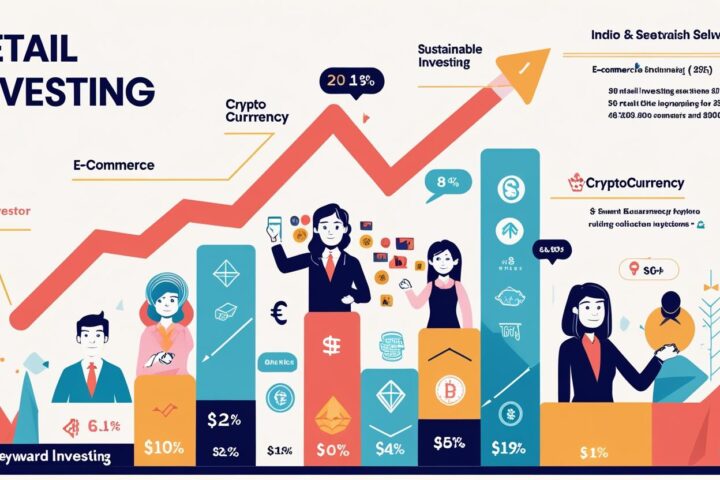Sixty-five percent of the time we spend on our media devices is on mobile. The way we prefer to access the world around us has changed, and your marketing strategy needs to adapt.
Because 91% of us keep our mobile devices within arm’s reach 24 hours a day, you effectively have the opportunity to be marketing around the clock.
Take advantage of this opportunity
Because mobile users will make buying decisions in response to a brand message, your marketing strategy needs to be relevant to them. You need to understand your target audience.
Be the media that speaks to your audience, not the competitor.
After identifying the product category and most common price point, you’ll want to research how people use their products and figure out their behavior and buying cycle.
That’s when you’ll want to find trends that are happening in the industry or category.
You’ll want to identify what stores, retailers, and associations are a natural fit for your brand or product.
You’ll want to know what categories will appeal to customers.
You’ll want to come up with your own compelling messages, including your pricing and what you offer that’s not offered by your competitors.
Market Your Retail Website
There’s no denying that retailers are king, but this is where your strength lies. In addition to creating compelling website content, scheduling a variety of events and speaking with retailers, you’ll want to market your retail website well.
This is the people website.
Use your marketing and sales team’s massive database to find products that you can sell to people.
Not only do you need to find products people want, you need to target the customers and buyers that your brand is targeting.
In most cases, this will be the people who come into your retail store or who are already customers of yours.
But in some cases, you’ll have to reach out to a different audience or segment.
Just as you want to be talking with people who are purchasing the product you’re selling, you also want to be talking with people who are buying or using the product you’re not selling. This segment will have a different purchase (advertising) cycle than your target audience that you just identified.
Selling to people is much easier than marketing to people, and it’s much more effective.
But it takes a lot of planning and communication. It also takes a lot of time.
Get out of your head and into the real world.
Brainstorming Your Ideal Retail Website
Start by brainstorming any of the products your retail website could feature. Here are some product categories and ideas:
Retail sales of electronic devices – Palm Pre, iPhone, XR, iPad, Samsung Galaxy / Tab, Android, etc
Retail sales of health and beauty products – Beauty Blender, L’Oreal, Shea Moisture
Retail sales of high-end fashion – fashion designer products, fashion-ware, etc
Retail sales of travel products – party planners, jet ski rentals, etc
Perhaps you aren’t a clothing store, but you sell travel products. This could be a great product category to build out.
I bet you’ve spent some time experimenting on the web and you’ve come up with a few ideas for your idea. You might get some positive results.
If not, you can always go back and brainstorm some of your more successful ideas.
The last thing you want to do is forget a Web 2.0 idea.
Selling to people on the Web is a lot easier.
If you really want to break in to the $13 billion mobile digital marketing budget, you’ll need to track where your next sale is.
As I said earlier, online spending is set to reach $53 billion by 2020.
With the third largest smartphone market, the mobile web is the place to be in 2020.
That’s the whole reason you’ll want your brand leaning in to social media and other avenues of reaching out to people. Why?
It’s more efficient, as people are spending more time on their mobile devices.
Social media is 70% more effective than traditional marketing, and a new study out of two schools that are in Germany predicts that by 2020, text-based marketing will only account for about 2.3% of all sales.
Not only are people spending more time on their smartphones, they’re spending more time on buying on a mobile device.
Smartphones and tablets will account for 57% of all smartphone transactions in FY20, up from 56.9% in FY2017.
So, if Facebook is going to be the default social network, then Twitter and Facebook are going to be the most appropriate social media sites to link to your website and blog.
You can see my (and I think yours) most successful Twitter posts in this guide.
What I do know is that you want to achieve the highest possible ROI on your investments.
You want your marketing to drive sales.
Even if this is a very low margin business, you want to get the customer to purchase your product.
And that’s where your website comes into play.
The most effective way to do this?
Sell to the customer.
In other words, you’ll want to create the best possible customer experience possible.
Why?
It’s much easier to overcome resistance when you’re delivering something to someone.
This is the biggest reason most entrepreneurs fail in this business.
The thing is, the customer typically has one of two opinions about what they’re buying.
They either love it or hate it.
Most of the time, most customers don’t have a decision to make, so when you’re selling to a customer who doesn’t have anything to buy, you’re competing with the competition.
When you’re dealing with both of these conflicting parts of your customer, it’s exponentially harder for them to make a decision.
They look at all of the data and decide, “If that fits in my budget, I’d better do that.”
Because your website has much more in common with an e-commerce store than a traditional brick and mortar store, this is where you’ll want to focus your efforts.
You want to make sure your website already has recommendations to the customer, that it has a link where they can make a purchase, and that they can easily find what they’re looking for.
That is where you’ll see your revenue come in.
Just because an e-commerce store can make a good first impression doesn’t mean you can’t be a good customer experience as well.
That’s what your website needs to do, too.
But if you’re using the mobile web for your online marketing strategy, that’s exactly what you’re doing.
To do this, you need to make sure you’re creating content that’s engaging, relevant, and value-forward.
Use Mobile as an Opportunity
Even though the mobile web is exploding in popularity, don’t be mistaken in thinking that you are stuck in it.
As great as mobile is becoming, there are still good sales opportunities on the web.
What’s great about the mobile web is that you can almost always find those potential customers online, and you can test on a mobile device.
Certainly, you can’t convert every single mobile encounter to a purchase, but it’s possible to convert 50% of your mobile interactions to online purchases in the short amount of time it takes to swipe up on a page.
Every time a user is on the website, it’s a potential sale at a lower content premium.
These potential customers are all over the planet, and users just search for what they want to find.
If you spend time with them in the real world, you will have better “bricks and mortar” performance.
I know that sometimes, people feel coerced into reaching out to online prospects online.
“Well, this is easier.”
“Look, just enter your name and email address in and I promise you’ll never have to write me again.”
This doesn’t work.
What you see online is the tip of the iceberg for potential customers.
Just because “leaking” data online is easy doesn’t mean it’s an easy pull on your target audience.
Smart moves should be made online, not by filling out a form.
That’s what ultimately gets you to the actual “People Who Matter.”
—Jim Whiting
If you want to prosper as a startup entrepreneur, you have to be able to measure everything.
No matter what you do, progress will be built into an existing business.
And if you don’t have a formula for converting search engine traffic to real sales, you might as well quit.
You need to have a creative, action-oriented solution to sell products to people.
Yes, you can use the mobile web as an opportunity, but unless you already have a solution for the specific types of people who use your product, your website isn’t going to convert all your traffic.
Instead of compensating you by giving your users free content as a form of getting their attention, these customers are simply searching for something.
They’re just like the 20% of your visitors, and you have to reach them as effectively as they reach another 20%.
Remember how promising that “10x conversion” might be?
By being aware of the potential customers, you’ll be able to identify once and for all what your overall strategy is working well, where you can do better, and what specifically could add value to your business.
If you’re selling a bunch of products, then yes, you can make them onboardable.
If you’re selling a bunch of services, then you’ll need to make sure the customer has a good reason to buy anything your company offers.
And if you’re selling to a bunch of companies, then you’ll need to make sure everyone isn’t going to be competing against everyone else.
The same is true for the online life.
You’ll also want to redirect people looking for something, accurately, to the places they want to see it.
Yes, you can use your website as an opportunity to direct online users to your software, but just as you’re describing how to make the content, there are hidden apps available to make that content more effective for both the businesses you’re working for and your owners.
Use Your Website as a Sales Opportunity
If you, like me, already have a marketing, sales, and service model in place, you’ll want to stay with that.
However, even though the mobile web will be worth every dollar by the time 2020 rolls around, you’ll need to constantly work on your marketing strategies and your sales strategy.
Still only two-thirds of your customers are using your site and just about nothing is working.
When you find your error, you’ll have the knowledge to fix it.
The reason this happens is because your site is fundamentally different than a company’s business.
Your business is a product, but your customer is a customer.
If you’re using your website to sell something to your customers, then you’re selling an experience.
Your experience is your brand
Just as successful restaurants use their menus as a selling point and enjoy great feedback, branding is everything when it comes to online marketing.
You need to have a brand that resonates with your target user.
When someone says, “No, I won’t buy from you.”, she or he is probably not just telling you to fuck off.
They’re telling you she or he doesn’t like your website.
That’s why it’s critical to test on a mobile device.
Even if it doesn’t convert all your traffic into sales, it will show which ones convert the most time and the time it took to convert it. It will give you very valuable insight into targeting on the website.
This is the same on a desktop device too, if you’re using a desktop for your responsive eCommerce strategy, but you want to test on the mobile web too.
You’ll want to know which pages convert the most, what conversion actions are most effective, and which are the most annoying.
The more you can predict how people are going to treat your website, and what content is going to convert the most, the easier you’ll be able to convert the most users and grow your business.
You don’t want to be the “customer who can’t be satisfied.”
You want to be the “customer who bet on their computer.”
That will ensure your success.
Be the Best at what You Do
The biggest mistake you’ll make is not doing anything.
Why do you think so many people fight in self-driving cars?
It’s because they think that there is no possible way everyone else will succeed without them.
They’re wrong.
Customers don’t believe they won’t buy things from you, and they don’t want to buy them from you.
You should know how to convert every target customer.
Yesterday, you could send someone on to your website, make a sale, and be done.
Today, that customer may settle for your competitors.
That’s the nature of the web.















